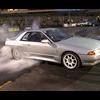Supercharging An Rb20det?
Announcements
-
Similar Content
-
Latest Posts
-
That makes a lot of sense. good info, point taken. Thanks Matt.
-
That's called a shopping trolley handle, or an ironing board.
-
what type or kind of spoiler is this? only seen a couple of these ever, the wing section looks like a stock gt or gtt spoiler style, but one piece? and much taller...
-
Personally, I'd stick to appropriate sized injectors if you're not going to go shooting for needing all of that fuel flow. Even though ECUs have improved, having that less size still allows for slightly easier fine tuning. Basically, an injector twice the size you need, means giving a small change, is still going to be about twice as big as you might want. Being able to make smaller and finer adjustments can make dial ins easier. ECUs still have a limited resolution they can work with. Why give away 40% of that resolution to something you don't need?



Recommended Posts
Create an account or sign in to comment
You need to be a member in order to leave a comment
Create an account
Sign up for a new account in our community. It's easy!
Register a new accountSign in
Already have an account? Sign in here.
Sign In Now